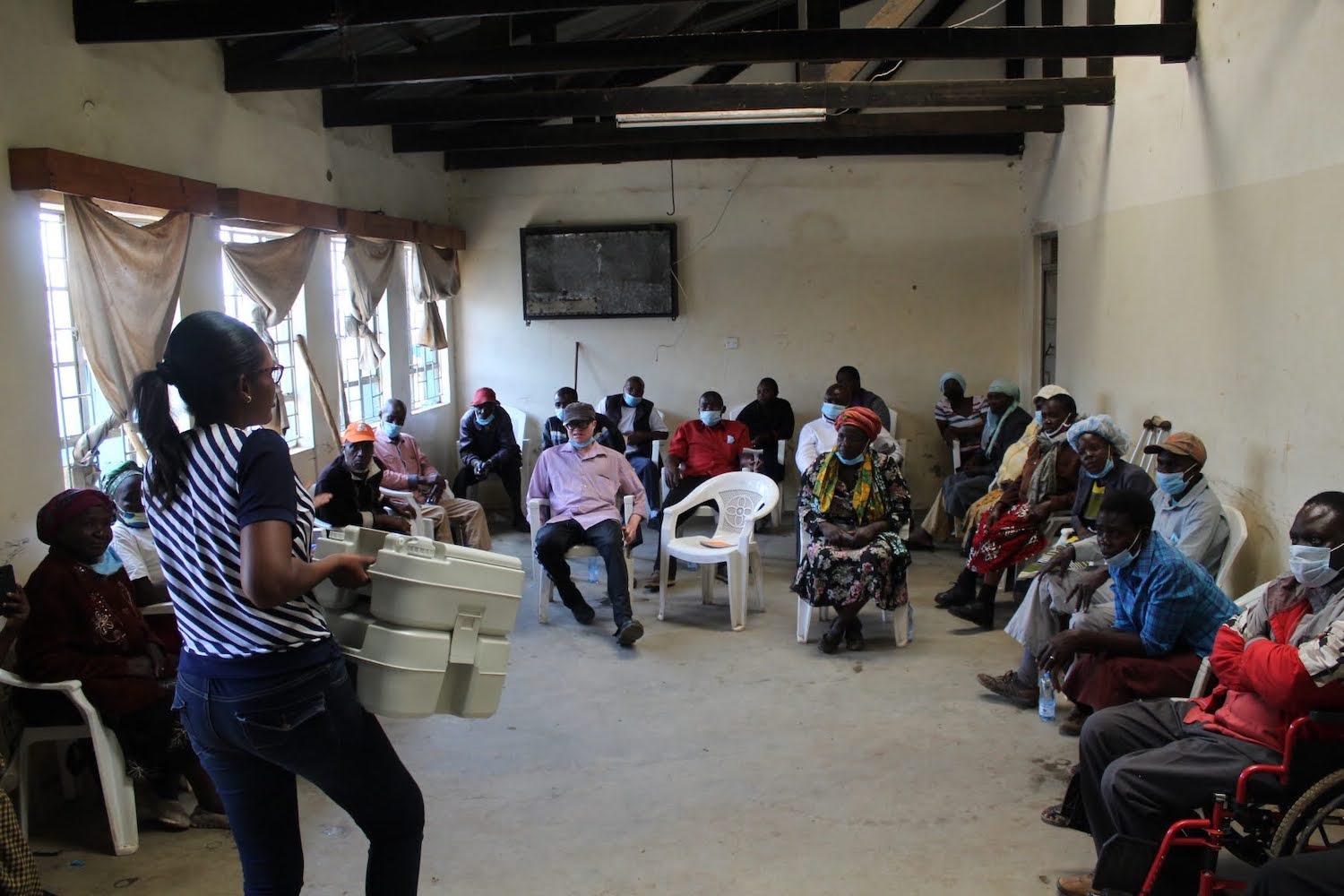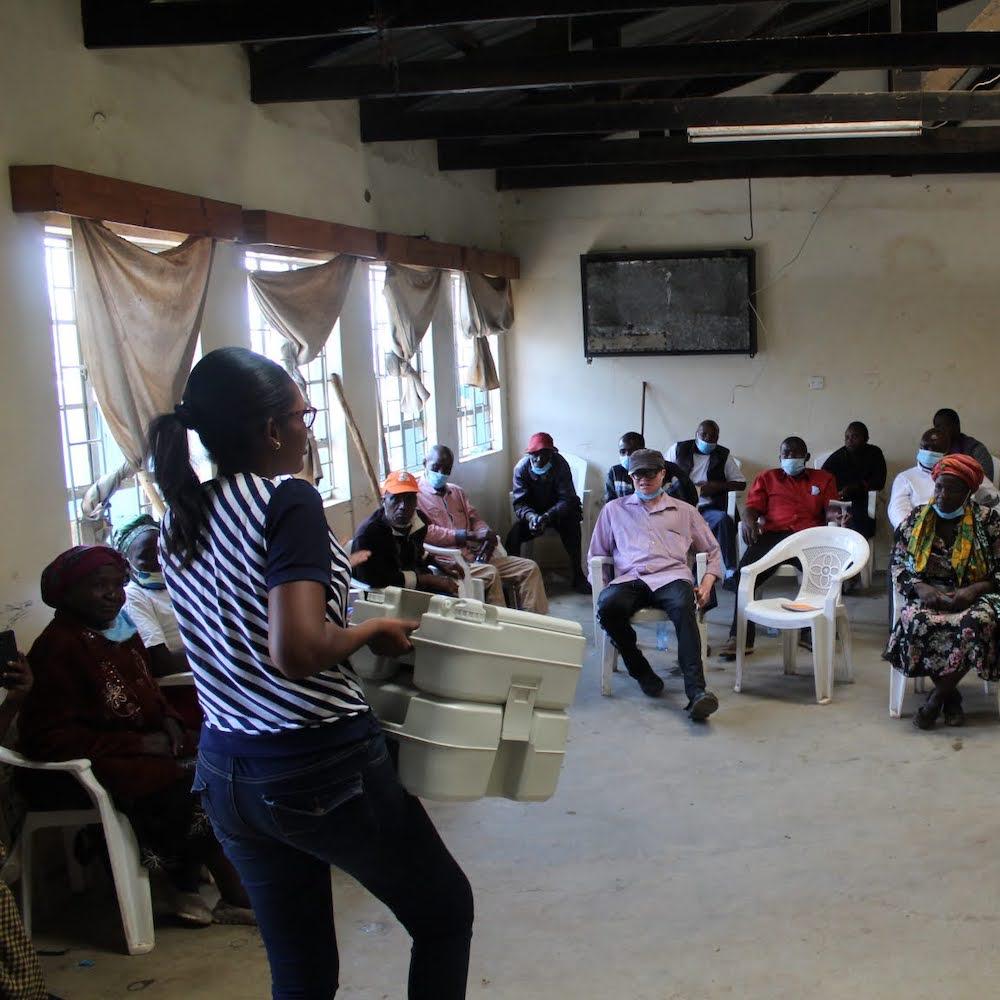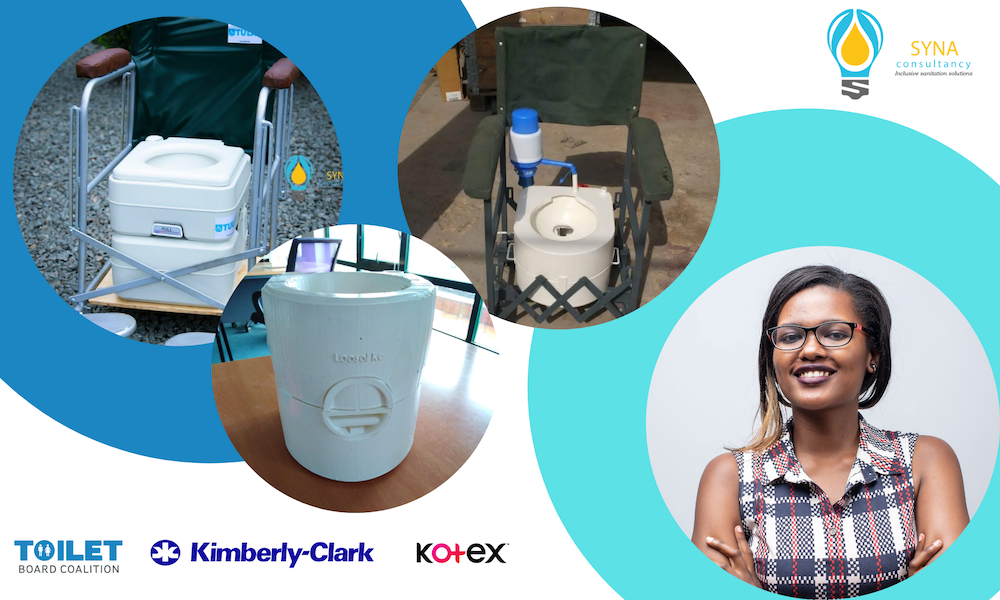Plastic Could Become a Larger Polluter Than Coal by 2030


Let’s throw in another reason why companies will feel more pressure to make the circular economy a reality sooner rather than later: By 2030, the entire U.S. plastic manufacturing sector could become a larger polluter than coal, according to a new report.
The nonprofit coalition Beyond Plastic says it has crunched the numbers and found that the plastics sector releases more than 230 million tons of greenhouse gases (GHG) a year. That number isn’t seen getting smaller at any point soon: During 2020 (the pandemic’s result in a surge of single-use packaging was a factor, clearly), the plastics industry released 10 million more tons of GHG than over the previous year. With construction on 12 new plastics manufacturing facilities underway, along with another 15 on the drawing board across the U.S., that expansion along could result in 40 more million tons of GHGs emitted into the atmosphere by 2025.
Researchers at Beyond Plastic based their claims on data they mined from U.S. government agencies including the Environmental Protection Agency (EPA), the Energy Information Agency (EIA) and the U.S. International Trade Commission, along with data from the Environmental Integrity Project. In a swipe at U.S. plastic manufacturers, the reported noted that “Reports generated by the plastics industry are incomplete, and consequently understate the quantities of gases, especially methane gas, it releases.”
Methane gases from fracking linked to the manufacture of plastics alone total 1.5 million tons alone, says the report.
In contrast, coal, no matter what that industry’s allies in government and the private sector may try to accomplish, has long been on the decline, as reported over the years on TriplePundit and other publications including Forbes. The waning of the coal industry has been driven by economics, as renewables have become more competitive in performance and price, while natural gas – which has its own drawbacks – has also become a far more cost-effective option for power generation companies as new power plants are built.
Nevertheless, even if 65 percent of U.S. coal-fired power plants have been shuttered, the growth of the plastics industry risks cancelling out such GHG reductions, concludes Beyond Plastic.
“The fossil fuel industry is losing money from its traditional markets of power generation and transportation. They are building new plastics facilities at a staggering clip so they can dump their petrochemicals into plastics. This petrochemical buildout is cancelling out other global efforts to slow climate change,” said Judith Enck, former EPA Regional Administrator and President of Beyond Plastics, in a public statement.
The Vermont-based organization further claims its conclusions are actually are on the conservative side. Among the drivers of this surge in plastic-related GHG emissions include hydrofracking, the processing and transport of fracked gases, ethane gas cracker plants, the export and import of plastics feedstocks and municipal waste incineration of plastic waste.
Beyond Plastic adds that failure to acknowledge and reduce plastics’ contribution to climate change worldwide could undercut any progress made during the upcoming COP26 talks in Glasgow.
Image credit: Marek Piwnicki via Unsplash
How Algorithms and Algorithmic Bias Shape Our Lives at Work


Algorithms now impact nearly every facet of our lives, and that increasingly includes the workplace. From hiring and promotion to scheduling, algorithms play an essential role in analyzing data for decision-making or automating processes. They are even being used to address issues around diversity, equity, and inclusion (DEI) initiatives and eliminate human biases in hiring and promoting that restrict opportunities for women, people of color, and other historically excluded workers.
While these endeavors are admirable, algorithms aren’t foolproof. They can sometimes create challenges by discriminating against specific demographics of candidates during resume reviews or misidentifying people with facial recognition software. Nevertheless, organizations recognize “the work that needs to be done to reach absolute fairness and eliminate bias,” says Wendy Rentschler, DEI lead at BMC Software.
Melissa Dobbins, who founded the software-as-a-service startup Career.Place to remove bias from the hiring process, says there’s more to it than just bad coding — the data sets can also be problematic, with “patterns built in based on our previous performance and decisions.” In many ways, algorithms merely pick up on those biases and replicate them.
While some workplace discrimination is explicit, a lot is clouded in decision-making that prioritizes background such as education or skills that, either directly or indirectly, puts white male candidates ahead of others. As a result, even today, 13 U.S. companies are led by male CEOs for every company led by a woman, and women lead just 6 percent of global companies in the S&P 500. Racial diversity is also lacking as just 18 percent of Fortune 500 corporate board members and 20 percent of S&P 500 board members are people of color.
Since companies with diverse and inclusive cultures experience lower turnover, the way they use algorithms may also play a role in the so-called "great resignation" in workplaces across the country. Employees are quitting because they’re fed up with employers that do not value them, and while business leaders often talk about employee engagement, in many companies that clearly isn't happening.
Are algorithms a part of this problem, and can they be part of the solution? That depends, says Dobbins.
“Algorithms are tools that augment human processes, but they are not replacements,” she explains. “We can’t just throw a bunch of data at it, let the technology tell us what to do, and then blame the technology when we go too far in the wrong direction.”
Algorithms are a tool, not a solution
Over the past few years, and especially since last year’s wave of racial justice protests, companies of all sizes have doubled down on commitments to make their workforces and management more diverse and reflective of the communities where they do business. Yet, so far, the real-world results of these efforts have varied around the globe.
An increasing number of companies are turning to algorithms to remove bias from hiring and increase diversity among their ranks. “When it comes to talent acquisition, algorithms are using all types of different inputs, titles, keywords, patterns of usage within a system, then applying those patterns to predict or suggest an outcome,” Dobbins explains.
Frustrated with the bias she witnessed in hiring, Dobbins founded Career.Place with the goal of reducing unconscious bias by leveraging anonymity. Described as “a hiring solution for the modern employer and the empowered workforce alike,” Career.Place allows employers to bypass resumes until after they’ve determined a candidate has the traits and capabilities they need most. “It’s a very simple concept,” Dobbins tells us. “If you have anonymity, you are now considering more objectively what makes a good hire and spending your time there. If it’s not necessary to know for evaluating the candidate for the job, then you don’t know it.”
“Inequity is the result of decades and decades of decisions,” she continues. “So to say it’s simply the fault of the company, or an algorithm, is taking a small view of a much larger challenge.”
The bottom line: Algorithms in the workplace are here to stay, and it’s up to us to ensure they’re inclusive
If used properly, there is a role for algorithms in the workplace, as they can help a company identify patterns, monitor metrics, and, yes, automate tasks. But the human element and understanding the limitations of algorithms is vital to making progress on DEI.
“Technology is a tool, an augmentation to existing processes. So first and foremost, you have to have decent processes,” Dobbins says. “Technology is going to find patterns you never knew existed, but humans need to make sure those patterns matter.”
Integrating algorithms can shine a light on organizational and institutional blind spots. Rentschler of BMC Software acknowledges that digital transformation needs to deliberately impact DEI initiatives. For example,“organizations can pre-check job postings using gender decoders to identify subtle linguistic gender-coding that turns away talented applicants,” she says.
In the end, what an algorithm does is nothing more than a reflection — or amplification — of corporate culture or society at large.
Algorithms in the workplace are undoubtedly here to stay. But the human component is integral to ensuring algorithms work to empower, not exclude, diverse workers. It will be the key as companies look to meet their ambitious DEI goals and finally begin to turn the tide from the social legacy of decades of discrimination.
This article series is sponsored by BMC Software and produced by the TriplePundit editorial team.
Image credit: Seventyfour/Adobe Stock
Monday, 10/25, Noon ET: We Unveil the Responsible CEO Awards


Join the 3BL Media team virtually on October 25 at 12 p.m. ET/9 a.m. PT for the Responsible CEO Awards as they recognize leaders who have met this moment by demonstrating bold leadership. There is no cost to register and attend.
As we’ve seen over the past 18 months with the global pandemic, multiple global challenges and evolving stakeholder expectations have raised the bar for business leadership.
Throughout the one-hour virtual event, honorees, who come from various industries, will share their personal insights on their role as CEO and what it means to lead with purpose and an authentic vision.
3BL Media and its staff present this year’s Responsible CEO Awards to corporate executives who embody bold, forward-thinking leadership. Whether it was by navigating their employees and communities through the pandemic; committing to the highest possible standards for ESG transparency; making substantial investments in the communities that they serve; scaling up innovation for positive worldwide impact; showing the way toward becoming a sustainable company; using the power of their positions to empower a new wave of female and diverse talent, this year’s honorees all demonstrate both responsible leadership and an unwavering commitment to serve.
Being recognized by the Responsible CEO Awards is especially meaningful, as the judging panel consists of past recipients of 3BL Media’s Responsible CEO of the Year Awards. You can view previous award winners, which included leaders from Verizon, Hannon Armstrong, Girl Scouts of America, Porter Novelli and P&G, on the 3BL Forum page.
Like many organizations, the pandemic led us to make our in-person events virtual. But while we’ve got your attention, be on the lookout for announcements about the next 3BL Forum, taking place on October 25, 2022, in New York City – one way in which you can stay informed by subscribing to the Brands Taking Stands newsletter.
Image credit: Max Vakhtbovych via Pexels/Andrea Piacquadio via Pexels
For This Company, Customers Are Crucial in Forging a Path Toward Sustainability and Regeneration


It’s not a stretch to say that no matter what one’s role at a company may be, launching a new product, strategy and, of course, a path toward becoming a more sustainable business is far from easy. Many of us are still working remotely; companies have more stakeholder groups to whom they must answer; and new means of communication such as social media can muddle the message as much as expedite it. Meanwhile, sustainability isn’t a nice-to-have; it’s now a must-have.
And if current trends hold, sustainability isn't enough. Regenerative is fast entering the corporate lexicon, as there is more pressure to shift toward a more circular economy.
So how can companies drive innovation when it comes to succeeding on stakeholder engagement, educating consumers as well as maintaining successful relationships with partners? During a panel at this week’s Sustainable Brands conference in San Diego, Prakash Arunkundrum, Logitech’s head of global operations and sustainability, offered valuable insight to anyone vested in the sustainability space, whether they are a heading a marketing team, wear the hat as product manager or are tasked with revamping an organization’s strategic direction.
Let’s first shine light on one of Arunkundrum’s many achievements: His work has helped Logitech increase its use of post-consumer plastic within its largest product portfolio to 50 percent earlier than the company had planned.
For Arunkundrum, it was important to view “carbon as the new calorie.” He explained that it was important for the team at Logitech to understand the very footprint of the products that they create. “We want to be as transparent as we are able,” he added, noting that the company discloses its carbon footprint not only for its operations, but does the same for its Scope 2 and 3 emissions as well.
The company’s ongoing focus to reduce carbon, however, is far from limited to the checking of boxes on disclosure statements. If anything, Arunkundrum described a process that led to one important first in the industry: carbon labeling, a decision that not only helped the company stand out within its industry, but also convinced more of its competitors to do the same.
According to Arunkundrum, Logitech’s original plan was not to roll out carbon labeling. “The intention was to understand the effects of carbon,” he said.
At first, the company had been working with vendors to find ways in which it could reduce the emission of carbon during the entire manufacturing process. Concurrent during those conversations was the back-and-forth Logitech had with one of its most important stakeholders: the gamers who buy its products.
Logitech has long said that it is “designing for sustainability,” a commitment extended to all of its products, including those crucial for gaming. Part of that ongoing promise to its stakeholders is the fact that all its gaming products are now labeled as “climate pledge friendly” on Amazon.
“We want to influence the choices they are making,” said Arunkundrum, “as well as have them help keep us accountable.”
Like many companies, Logitech faces the reality that while its customers may say they want more responsible, sustainable and regenerative products, at the same time, that doesn’t mean they necessarily want to pay a “green” or “sustainability” premium when it comes time to purchase any such items.
In the case of gamers, even if they want a sustainable mouse, keyboard or other accessory, being limited to a dowdy color as in some shade of grey won’t excite those customers. That demand has helped drive Logitech’s own culture of innovation; since 2017, the company says it has been working with its vendors to go beyond grey resins. The result is that 30 colors are now available within the company’s portfolio of products. The product line is also carbon-neutral. “Resins with flair,” Arunkundrum quipped.
In contrast (pardon the pun), color also became one factor in how Logitech has approached packaging in recent years — as in, how to make it more sustainable. The results? Well, they include smaller packaging that uses less materials and fiber, and also less color. After all, less color on packaging means less money spent on procuring. Arunkundrum noted that the company was actually able to save costs on this front, which meant any discussion of a “green premium” for its products was not necessary.
One argument that has long lingered within the business community is that for larger companies, one barrier to becoming a more sustainable operation is that these decisions take time. Intuitively, it makes sense: A larger company means more employees, more managers, more departments and more stakeholders, thereby extending the decision-making process. Arunkundrum made it clear that is not the case at Logitech. As this session reached its conclusion, he said, “When you’re already a leader in the field, when you feel that instinct, follow it!”
That is to say, buy-in across the company is important. “You have to have the conviction to invest in the marketing effort and the design effort,” said Arunkundrum.
For those interested in learning more, Logitech’s latest sustainability report is available here.
Image credit: Logitech; Logitech products site
Foxconn Is Branching Out from Phones to EVs — and It Could Transform the Auto Industry


For years, consumer electronics products designed and sold by familiar household brands have been made by contract manufacturers, whose names do not appear on the box. Indeed, products such as printers and mobile phones are made in overseas factories by companies most people have never heard of. Foxconn might, however, be one of the few contract manufacturers some people may be familiar with.
The Taiwanese company has churned out countless iPhones for Apple over the years. But this week, in announcing the development of three prototype electric vehicles (EVs), Foxconn is stepping out of the shadows. And in doing so, it is potentially signposting how the auto industry may be disrupted, with a non-traditional player getting into the automobile manufacturing business.
Unlike the consumer electronics business, the automotive industry has generally kept both design and manufacturing in-house. True, car makers routinely use common third-party component suppliers, but the final product is not typically subcontracted out. Fords are made in Ford factories, for example, and it’s quite a proprietary business.
Foxconn’s foray into the auto industry potentially changes this paradigm as it seeks to build its own brand as well as follow its existing contract manufacturing sensibilities.
And in the EV space, this begs the question: To what extent is building EVs more akin to assembling consumer electronics products, than building traditional internal combustion engine-powered cars?
Obviously, building cars is not the same as making phones, but Foxconn evidently sees significant synergies for it to make sense.
Often when disruptive technologies emerge, industries established doing one thing, bleed into areas not typically associated with their core business.
Consider Amazon, which during the course of developing its huge online marketplace, realized its data centers could support web-hosting services which it could sell to other companies. As this proved a success, Amazon encroached on an area of business traditionally occupied by information technology companies.
Foxconn’s move to build EVs could similarly prove to be electronics contract manufacturing bleeding into the traditional auto manufacturing space and in doing so, start to reshape it.
If that’s the case, it’s a key development, but in any case, it’s another chapter in the evolution of an industry already pensive about its future.
Years ago, Ford reframed itself as a mobility company, foreseeing a time when car ownership would likely diminish especially with autonomous vehicles on the horizon, combined with micro-mobility trends. The company realized it couldn’t ignore mobility as a service, despite the fact that car making would remain fundamental to its core business for the foreseeable future.
Foxconn, too, clearly sees an opening as the auto industry shifts. As vehicles increasingly become computers on wheels, its core electronics contract manufacturing competencies lend themselves to branching out into a legacy industry in flux.
But as competition evolves in the automotive and transportation space a significant amount of risk will be taken.
Bear in mind, it’s hugely difficult to successfully launch a car company because it’s very capital-intensive and the market is already well supplied. Tesla is one of the few automakers to successfully manage it in recent history. So, Foxconn has not chosen an easy path to tread.
But operating as a contract manufacturer appears to be part of its business approach, distinguishing itself from the in-house auto making model mentioned earlier.
Indeed, one of the three EV prototypes Foxconn announced this week is a performance sedan with a 400-mile range, which is going to be sold by an unspecified car-maker outside of Taiwan.
Furthermore, earlier this year, it was announced that Foxconn has partnered with Fisker to build an electric car under the Fisker brand in the United States.
That company has already learned how hard it is to launch a successful car business. An early player in the premium plug-in hybrid space at the start of the 2010s, Fisker faltered around the time Tesla began to take off. Maybe Fisker will be successful a second time around in partnership with Foxconn, which is already a large, well-financed company able to leverage its contract manufacturing competences. (Note the Fisker Ocean, the company’s compact EV crossover, shown above.)
Notably too, Foxconn has bought the struggling Lordstown Motors plant in Ohio, after that company faced setbacks in bringing its electric pickup truck to production on its own.
But as well as Foxconn’s partnerships with other companies, it has aspirations to build its own brand too.
One of the three EVs it announced this week will be an electric bus capable of driving 250 miles per charge, which will be sold under a new brand, Foxtron, and made in partnership with a Taiwanese auto company, Yulon Motors. The involvement of the latter signifying auto-making expertise is still important to have on board, too! A crossover SUV is also in the lineup which will be sold under its own brand.
Expectations are high. Foxconn believes moving into the EV business will be a $35 billion opportunity over five years with the electric bus expected to be the first of the prototypes to go into production.
Whether Foxconn is successfully able to compete remains to be seen. It can take a decade to build a brand reputation in the auto industry, and the company has yet to build its own brand recognition. Launching the Foxtron brand starts this process, while the company hedges its bets in making vehicles in partnership with other car companies.
All this potential opportunity, of course, is unlocked by vehicles going electric, blurring lines between industries and showing that the EV world is still very much in flux.
Image credit via Fisker
Our Tribute to RP Siegel, 1952-2021


We here at TriplePundit are saddened to learn about the passing of RP Siegel, who unexpectedly died on September 25. RP (also known as Rob or Bob) was a longtime contributor to 3p, and his work is among the reasons this publication emerged among the leading news sites that focus on sustainability.
Born in Teaneck, New Jersey, RP’s adopted hometown eventually became Rochester, New York (shown above). He was a proud resident and was very active in local affairs. As he shared with us during a media trip to Abu Dhabi several years ago, his many achievements included being a runner-up in a New Yorker cartoon contest. Other accomplishments about which he was less verbose included his impressive career as an engineer, which made its mark with more than 40 patents that he filed as an inventor.
In addition to 3p, RP was a prolific contributor to publications including Design News, Huffington Post, Mechanical Engineering, Just Means and Green Biz. RP also wrote three books, which included the environmental thriller, Vapor Trails, (available on Amazon!), written with his close friend and fellow environmentalist, Roger Saillant.
We will especially remember RP for one of his most timeless contributions to 3p, his 2012-2013 series Energy Options: Pros and Cons. Completed almost a decade ago, these articles include discussions about energy sources, including the pros and cons of clean coal, natural gas, solar and tidal power. Based on the fact that these articles still rank amongst the most read on 3p - in the 16 years since 3p first appeared online - we suspect that many students, along with those new to the very concept of sustainability, owe their fair share of gratitude to RP as well.
Those close to RP have requested that anyone wishing to make a donation in his memory consider contributing to the The Nature Conservancy (earmarked for the 1000 Acre Swamp), 274 N. Goodman St., Suite B261, Rochester, NY 14607, or do so on the nonprofit’s website.
More about RP’s life and legacy can be read here.
Image credit: Yassine Khalfalli via Unsplash
Don’t Mess With Us, Airlines and Other Industries Tell Texas


Dallas/Fort Worth International Airport, one among many scenes where tensions between companies and the Texas legislature are playing out.
Despite its firm foothold in the fossil energy industry, Texas has emerged in recent years as a national leader in wind power. Becoming a clean technology hub will take the state a while, however. To start, the state’s long-term ability to attract companies and marquee brands, not to mention achieving growth in next-generation industries, is at risk by conflict over anti-science policies including moves to ban COVID-19 vaccine mandates.
Bans on vaccine mandates are only the start in Texas
Along with the Texas governor’s recent attempt to ban vaccine mandates, lawmakers in the Lone Star State have worked over the years to restrict reproductive rights. Such efforts culminated with the passage of a new law that bans almost all abortions on grounds that do not align with medical science, say multiple physicians who specialize in reproductive health.
That lack of support for the personal rights of women stands in sharp contrast to the state’s position on proven strategies for preventing sickness and death from COVID-19. Rather than supporting businesses that require masks and vaccinations, Texas Gov. Greg Abbot and the state legislature have championed the personal rights of anti-mask, anti-vaccine individuals over workplace safety and public health. Texas is also one of many states to pass legislation that restricts access to the ballot box.
The voting rights restrictions, the abortion ban and the COVID-19 response all make it more complicated for companies to do business in Texas — at least for those working to promote gender diversity and employee wellness as key elements in their corporate profile.
Sleeping corporate giants are waking up
The clampdown on voting rights in Texas sparked a corporate uproar that many say amounted to all noise and no action. The corporate reaction to the new abortion ban was even less effective and barely raised above a murmur. Last month dozens of corporations with a footprint in the state signed on to a letter of protest, but many of those were small- or medium-sized companies. Many were also women-led or associated with womenswear and household products, indicating that activism on reproductive rights has failed to cross over into the mainstream of corporate thought.
Editor's note: Be sure to subscribe to our Brands Taking Stands newsletter, which comes out every Wednesday.
However, Gov. Abbott’s proposed new ban on COVID-19 vaccine mandates seems to have stirred several top leaders in the corporate world into action.
Last week Abbott issued an executive order that bans companies from requiring COVID-19 vaccinations for employees or customers. He also called the Texas legislature into session in order to pass a law aimed at exposing businesses and other organizations to lawsuits if they impose vaccine mandates on employees.
The executive order was swiftly challenged by Dallas-based Southwest Airlines, which cited its responsibility to maintain workplace safety under its federal contracts. American Airlines, based in nearby Fort Worth, similarly brushed off the executive order, arguing that the federal vaccine mandate supersedes Abbot’s order.
Meanwhile, much of the corporate world of Texas rallied against the effort to expose organizations to legal action if they mandate vaccines. As a result, the state house's version of that proposed legislation failed to make it out of committee last week. The state senate version, SB51, limped into the full chamber on Monday and was promptly killed.
The Texas Tribune listed “several chambers of commerce, the Texas Association of Business, the Texas Hospital Association, the Texas Association of Manufacturers, the Texas Hotel and Lodging Association, and the Texas Trucking Association” among the business organizations opposing the legislation. Along with public health concerns, they cited bottom-line impacts on small businesses and companies that rely on federal funding.
Big guns go to bat for vaccine mandates
Also throwing its weight against the legislation was the business group Greater Houston Partnership. The organization’s short list of executive partners includes BP, Chevron, Shell and ExxonMobil, along with several leading energy companies and the firms Accenture and JPMorgan Chase — and that’s only the start. Greater Houston Partnership also counts a long list of corporate members including leading national and international brands like PepsiCo and Anheuser-Busch along with scores of employers in energy and other key Texas industries.
On Oct. 12, Greater Houston Partnership CEO and President Bob Harvey issued a statement against Abbott’s executive order. Emphasizing that his organization has supported vaccine mandates from the beginning, Harvey explained: “Businesses have a duty to maintain a safe work environment, and many have deemed vaccine requirements an important step to get back to business safely and necessary to grow Houston’s economy.”
Harvey noted that Greater Houston Partnership supports exemptions for religion or health as required by law, but he also suggested that offering the alternative of frequent testing is weak tea compared to universal vaccination. “The governor’s executive order does not support Texas businesses’ ability and duty to create a safe workplace,” he wrote in the statement. “Vaccinations are our path out of the pandemic, and the Partnership remains focused on supporting steps that lead to improving the rate of vaccination in our community.”
Now that corporate muscle has been flexed, what’s next?
The failure of SB51 is at least a partial vindication for companies that have affirmed their vaccine mandates, despite Abbott’s executive order, and it’s clear that corporate giants have the power to flex their muscles on matters of public policy outside of their direct business interests, when they choose to do so.
Image credit of DFW airport: Javier Vinals via Unsplash
The Pandemic Keeps Piling on the ‘She-cession’


A recent study adds to the ongoing conversation about how the pandemic has many an impact on women executives in the workplace, with the results including the long-term risk of holding back many women’s opportunities in leadership and career advancement, not to mention their work-life balance.
Zurich-based leadership advisory firm Egon Zehnder’s annual survey on women in the workplace contacted more than 300 C-suite executives and found several frustrations that women business leaders are experiencing, which continue to build as the delta coronavirus variant is throwing off many companies’ reopening plans.
Among the findings are first one that is intuitive: 97 percent of these C-suite leaders agreed with the suggestion that remote work is beneficial for their women employees. But there’s at least one drawback to meeting both the demands of life and work at home: Seven in 10 respondents said employees who spend a lot of time working remotely are passed over for career advancement due to the fact that their peers do not see them physically onsite.
Therein lies tensions that will continue to bubble in the workplace that many HR professionals will have a difficult time ironing out as the impacts of the pandemic persist.
Editor's note: Be sure to subscribe to our Brands Taking Stands newsletter, which comes out every Wednesday.
It’s clear the ongoing chaos occurring in many families’ lives — as in the stress of several people in a household working or studying from home, the added challenge of helping children with schoolwork along with helping elderly family members, and the fact that work and other responsibilities never stop — many of these burdens are largely falling on women.
Nevertheless, this survey shows there’s a high expectation that women will return to the office at the same rate as men. Egon Zehnder’s survey found that sentiment is shared by 84 percent of executives, with the top reasons that men and women should be “treated the same” (43 percent) and that women are effective at their jobs while proving to be effective leaders (37 percent).
Additional research completed by McKinsey and LeanIn.org found a similar trend: Many women in the office, virtual or physical, are performing an inordinate amount of “office housework,” much of which is related diversity-related work that at many organizations has helped create a more inclusive workplace. That under-appreciated and unrecognized work, however, is contributing its share of stress to the work lives of many professional women.
Scratching your head yet? Here’s another curveball: In the same survey, around 80 percent of respondents acknowledge that the pandemic has negatively affected women’s progress within companies, and about the same number realized that women within their companies have been balancing more personal and professional responsibilities.
Meanwhile almost all said the pandemic (clearly) has had an impact on work culture, business and personal leadership goals.
What’s the solution? Should employees and managers alike step it up and get through this time? Or is it up to corporate leaders to implement clear policies that ensure all employees can balance work and home responsibilities, and not be held on for doing so?
“Leaders [must take] allyship and mentoring to the next level, and go beyond expressing support,” the report's authors observe, “but take personal responsibility for creating a more inclusive workplace and ensuring there are opportunities for career progression across the organization.”
That sounds easy enough. The hard part will be executing such a policy, along with transparency on pay and promotion that not only cuts across gender, but also takes into account employees who work remotely, hybrid or are in the office full-time.
What’s happening to many women in the workplace is visible in the raw data, as in the U.S. government’s August jobs numbers. That month less than 12 percent of all new jobs went to women. “That’s a crushing drop,” wrote Liz Elting for Forbes, “and it reflects the sorry state not only of the job market, but of how America treats its women.”
How Mentorship Changed the Game for This Kenyan Entrepreneur


Sylvia Nyaga (left), founder of Syna Consultancy, training people on how to use the Utulav toilet in Kenya.
“My child has a reason to smile. We used cans before, but now we have a reason to smile.” This is one of many heartfelt testimonials for the Utulav toilet, created by Syna Consultancy in Kenya. The portable toilet meets the needs of people with mobility challenges in a safe, dignified and sustainable way.
The idea for Utulav was born after engineer and entrepreneur Sylvia Nyaga spoke with the parents of a child with a physical disability. Nyaga was already thinking of designing a toilet, but the conversation opened her eyes to how underserved the mobility challenged were and how much they needed a new solution. “I thought that was a more noble cause than whatever I was doing before,” she told us.
Three years and four prototypes later, Nyaga and her team now have a product ready for pre-order. The Utulav is portable, comfortable, and has an easy and sanitary disposal system. Manufacturing, however, proved a challenge. How could Nyaga’s team trust external manufacturers and hold them accountable? Today, Syna is manufacturing a key component of the Utulav in-house, and the team has a second, more affordable product in testing. Nyaga was even nominated this year for the Kenyan Zuri Awards, which recognizes outstanding women who are changing lives in Kenyan communities. Still, leaping from final product to market entry and expansion took a lot of work, and one aid that helped Nyaga overcome these hurdles was mentorship.

To mentors: Don’t start by giving advice
Over the past six months, five entrepreneurs in the sanitation space participated in a mentorship program created by Kimberly-Clark and its foundation, the company’s Kotex brand and the Toilet Board Coalition, a public-private partnership that brings businesses, investors and governments together to scale market-based solutions for sanitation issues. Through the Women in the Sanitation Economy Innovation Lab, the up-and-coming Kenyan entrepreneur was paired with multiple mentors from Kimberly-Clark, each with specialized expertise to help Syna, ranging from marketing to manufacturing and quality control.
In particular, Syna had a unique challenge: building product specifications that establish a common language with suppliers without the use of any lab equipment, said Inbar Bengio, a Kimberly-Clark senior quality manager based in Israel who served as one of Syna’s mentors. “What can you measure when you don’t have any lab equipment that would be relevant to the product performance?” Bengio asked rhetorically.
Bengio and Nyaga worked together to develop tests that were as simple as possible while still yielding valid results. For example, they used bags of cement as weights to test product durability. “It was a simple idea that I could not think of initially because, for me, I was thinking I need to go to a plant that has the big machines to test it,” Nyaga said.
As the relationship developed, Bengio realized she had a lot to learn from Nyaga. “I analyze big data … every minute of my day, and here we were with basically no data available, so how do you start from scratch?” Bengio explained. “One of the very important things Sylvia taught me was to listen. Don’t assume that you understand. Don’t start by giving advice…. she’s in the field. She sees people using the product, and she knows best.”
Syna used to fully outsource its manufacturing, but the team ultimately realized it could manufacture one key component locally while importing another. “It’s a little lower production cost because we source the materials ourselves, and because we’re the ones doing it, we’ll ensure we have a high-quality product, as opposed to having to deal with external manufacturers,” Nyaga said.
She attributes a lot of Syna’s forward movement to mentorship: “If it was not for the mentorship, we would not be as far as we are right now,” she told us. “If it was not for those conversations, I would not be having a second product.”
Mentorship pays off for mentees and mentors alike
The data is clear: Mentorship benefits mentors and mentees alike. In a 2018 survey from the American Express finch brand Kabbage, 92 percent of small business owners said mentorship had a direct influence on the growth and survival of their businesses, and 89 percent of those who didn’t have a mentor said they would want one.
Mentors benefit from these relationships, too. Bengio, for example, has been a mentor for quite some time — she even earned an external mentorship certificate — and she has seen her role as a mentor strengthen her work. “The biggest contribution or benefit that I gain from it is supporting my team and other people’s growth — seeing people getting stronger and more capable. I love watching them develop wings so they can fly,” she said.
The numbers back up Bengio’s experience of gaining by giving. One meta-analysis from the Journal of Vocational Behavior found that mentors are more satisfied with their jobs and more committed to their organizations than non-mentor counterparts. “The findings support mentoring theory in that mentoring is reciprocal and collaborative and not simply beneficial for protégés,” the report reads.
As such, mentorship tends to create ripple effects. Nyaga now plans to be a mentor to fledgling entrepreneurs herself. “It’s important to pass this down, because I also have people behind me,” she said. “That’s also something I would love to do -- mentor people who do not have the same experience as me.”
This article series is sponsored by Kimberly-Clark and produced by the TriplePundit editorial team.
Images courtesy of Syna Consultancy
As Momentum Against Plastic Grows, Paper Recyclers Rise to Meet New Challenges


The movement against single-use plastics could pose a new challenge for paper recyclers. As consumers shift to paper items, recyclers face the prospect of managing a new flood of paper cups, cartons and other items made with new coatings that may not be fully compatible with their operations. The sustainable fiber and paper company Sustana illustrates how the industry is communicating with manufacturers to help ensure that plastic bans don’t create new problems when solving old ones.
Plastic bans, paper recycling and the COVID-19 pandemic
Among the many impacts of the COVID-19 pandemic is an increase in the use of disposable plastic. Much of this waste is directly related to medical use, but some of the shift has been linked to changes in everyday habits, such as ordering takeout food instead of dining at restaurants.
At the beginning of the pandemic, plastic stakeholders also touted plastic shopping bags as a more effective barrier against the virus than paper, a claim that has not been backed by evidence. Nevertheless, some jurisdictions reversed or delayed plans to ban single-use plastic bags and other items.
Since then, the movement against single-use plastic items has regained momentum. As the trend continues to gather steam, paper products will dominate a larger share of the single-use field. That is apparently the preferred result for a growing number of consumers, who view recyclable paper products as a more environmentally-friendly solution than plastics.
That is good news for manufacturers of single-use paper products. However, it could spell trouble for paper recyclers, as manufacturers create new coatings that moisture-proof paper cups, cartons and other items.
“When there is a strong push to get rid of plastics, we have to be thoughtful that the solution we identify during the product design stage is not worse than the problem we’re trying to solve,” said Jim Schneider, Sustana Fiber’s VP of operations. “That’s why we work closely with our partners and clients from start to finish to develop an effective solution.”
Paper recyclers evolve to meet new challenges
On the bright side, paper recycling is an innovation-based industry. Companies with a long history of experience in the field are primed to respond to shifts in the incoming stream of recyclables.
Steven Minor, fiber procurement manager for Sustana Fiber, has been in the business for 27 years and seen many changes in paper recycling technology and in the stream of inputs. “Technology is huge, whether it’s different types of screening technology or chemistry technology,” Minor told TriplePundit. “From a sorting perspective, the technology is also changing on that side. Robotic sorting is quicker and more efficient.”
Innovation also continues to be a leading element as brands look to create new packaging, regardless of the economic disruption fostered by the COVID-19 crisis. That keeps paper recyclers on their toes.
One of Sustana’s external suppliers is Chicago-based Mid America Paper Recycling. The company’s CEO, Don Gaines, notes that the pandemic has not slowed down the need for brands to ensure the recyclability of their products.
“There’s a huge variability, and it’s constantly changing on the inbound side,” he explained. “The scrap generation is constantly changing, because people are constantly thinking of new ways to add pizazz to their products with packaging.”
Paper recycling and the human factor
With more plastic bans looming on the horizon, the need to educate both consumers and package designers about paper recycling is growing.
Sustana Fiber already has a head start, partly due to its technology for recycling cartons. The company has worked with industry stakeholders to help make carton recycling available in more jurisdictions and to help ensure that residents know they can recycle their cartons. Still, there is a lot of catching up to do, as recycling rates in the U.S. continue to lag behind the European Union and other advanced economies.
Another area of concern is misinformation. For example, in 2018 Sustana partnered with Starbucks to demonstrate that the company’s paper cups could be recycled cost-effectively. The trial deployed a stockpile of old paper cups that Starbucks had on hand, and it was a success. Unfortunately, rumors about non-recyclable Starbucks cups continue to persist, and although recycling the cups is feasible, they may not be accepted in all municipal recycling systems. That makes it all the more difficult to get more consumers to recycle their used cups.
Keeping the lines of communication open
The non-recyclable rumor apparently persists because of the polyethylene lining used in standard paper cups, but that is not an issue for Sustana, Schneider explained. “The engineering for recyclability becomes a very important part of the [package design] process,” he told TriplePundit. “One of the easiest things we can do is separate paper from polyethylene. They separate rather easily in our process.”
Keeping the lines of communication open can also help to ensure that paper recyclers are ready to handle new packaging materials before they hit the market, Schneider added, using the example of new coatings on paper products. “I emphasize that to brand owners and manufacturers: When and if they do create new barrier coatings, they can give us some to test,” he said. “In general the communication has been positive, and the alternative coatings we’ve seen so far have not caused any issues.”
Decades worth of experience and innovation have put fiber and paper recyclers like Sustana in a position to collaborate with brands on new, more sustainable paper packaging for the U.S. market. However, with American culture rooted in individualism, the real challenge will be ensuring everyone puts recyclable items in the recycling bin, even when it’s not convenient.
This article series is sponsored by Sustana and produced by the TriplePundit editorial team.
Image courtesy of Sustana